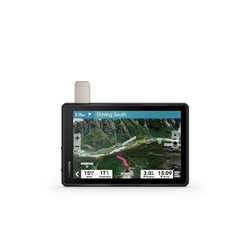The 12 Most Important Hand Signals on the Road
Communication between motorcyclists is essential to ensure everyone's safety, especially during group rides.
Riding a motorcycle is much more than just accelerating and hitting the road. Hand signals have become a universal language among riders, so every rider should know them to easily communicate on the road.
In this article, we explain the most common hand signals and what each one means, so you're prepared for any situation.
1. Turn Left
To indicate a left turn, extend your left arm perpendicular to your body with the palm facing down. The group leader uses this signal to inform other riders of an upcoming change in direction, prompting them to follow accordingly.
2. Turn Right
Naturally, your right hand must remain on the handlebars to control the throttle and brakes. Thus, raise your left arm perpendicular to your body (with the fist closed) and bend it upwards at a right angle at the elbow.
3. Speed Up
In certain situations, the group leader may extend the left arm, palm facing upward, repeatedly raising it from thigh level to shoulder height. This gesture indicates to the group that they should accelerate to match the leader's pace.
4. Slow Down
You must inform other riders when using engine braking (without activating the brake light). Extend your left arm with the palm facing downward and repeatedly move it downward from shoulder to thigh.

5. Stop Signal
Extend your left arm with the palm facing backward (fingers pointing towards the ground). If riding in a large group, this signal should be repeated by fellow riders until everyone is aware of the imminent stop. Mastering these hand signals and clearly conveying them within the group is crucial for safe and effective communication during rides.
6. Comfort Stop
Sometimes it's necessary to stop to rest, stretch your legs, or drink water. To clearly indicate this, raise your left arm with a closed fist and repeatedly move your forearm up and down. Then, extend your thumb upward and place it against the helmet visor, simulating drinking through a straw.
7. Fuel Stop
This signal is especially useful on long rides when refueling may be required along the way. Indicate to your fellow riders that you need to stop for fuel by repeatedly pointing to your motorcycle’s fuel tank.
8. Emergency Stop/Exit Road
Use this only in emergencies requiring an immediate roadside stop or the nearest exit. With your arm extended vertically, point your index finger to the sky and trace an arc above your head. This signal should be clearly visible to all riders for safety reasons.

9. Road Hazard
Pointing with your left or right foot, depending on the obstacle's side, is the most effective way to alert others about potholes, rocks, or oil slicks on the road. This signal allows you to keep your hands on the handlebars and is easily noticeable by fellow riders.
10. Follow Me
Extending your left arm vertically with an open palm signals the group to follow you. This gesture is especially useful when separating a smaller group from a larger one, but it's important to predefine which riders should follow each leader, especially on highways or busy roads.
11. Single File
Especially on narrow roads, the group might need to reorganize into single or double file. The leader indicates this by extending one or two fingers above their head, as appropriate, while moving their arm up and down.
12. All OK
Raise your left arm with a closed fist and thumb extended upward. Simple and effective: everything is okay. It's a quick way to communicate that everything is under control.
Conclusion
Knowing these hand signals isn't just about etiquette — it's a safety measure. Whether riding solo or in a group, being able to communicate on the road can prevent accidents and ease coordination between riders.
At In-Parts, we believe that an informed rider travels safer. Share this article with your riding companions and help contribute to safer and more enjoyable rides for everyone.





